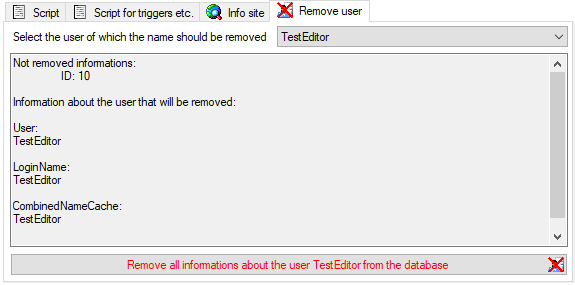 Database ->
Database ->
 Database tools ... from the menu. A window will open as shown below.
Database tools ... from the menu. A window will open as shown below.
These are the tools to handle the basic parts of the database.
The most of the functions support developers in introducing and maintining database
features. These tools are only available for the owner of the database and should
be handled with care as any changes
in the database may disable the connection of your client to the database. Before
changing any parts of the database it is recommended to backup
the current state of the database. To use these tools, choose Administation ->
 Database ->
Database ->
 Database tools ... from the menu. A window will open as shown below.
Database tools ... from the menu. A window will open as shown below.
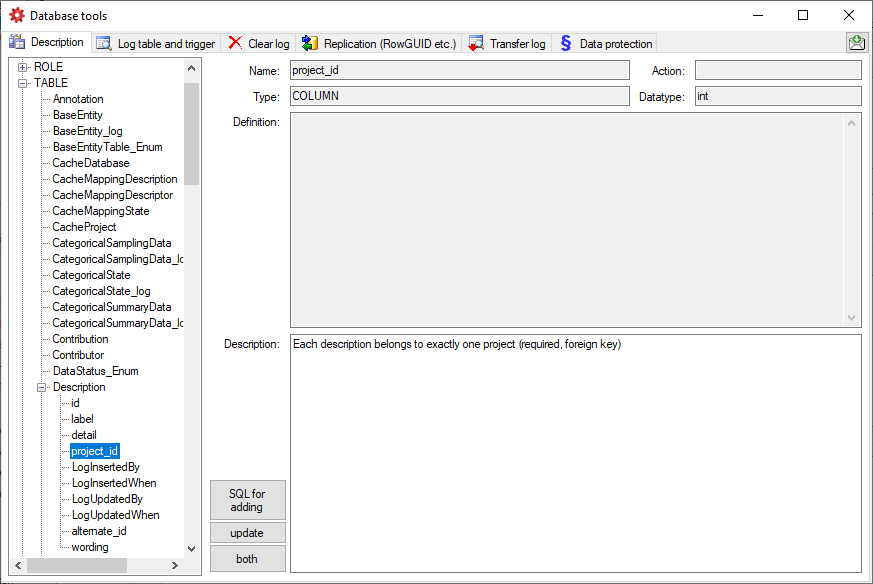
The Description section (see above) shows the basic definitions of the objects in the database and enables you to enter a description for these objects including tables and their columns, functions and their parameter etc. With the buttons SQL for adding, update and both you can generate SQL statements for the creation of the descriptions in your database. Use the button both if you are not sure if a description is already present as it will generate a SQL statement working with existing and missing descriptions (see below).
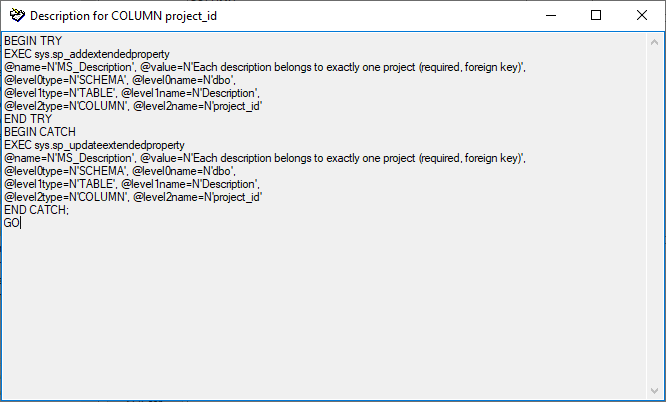
In the Log table and trigger section (see below) click on the List tables button to see all tables within the database. The Table section shows the basic definitions of a selected table. If columns for logging the date and responsible user for inserting and updating the data are missing, you can use the Attach ... button to attach these columns to the table. Furthermore you may add a RowGUID to the table as e.g. a preparation for a replication.
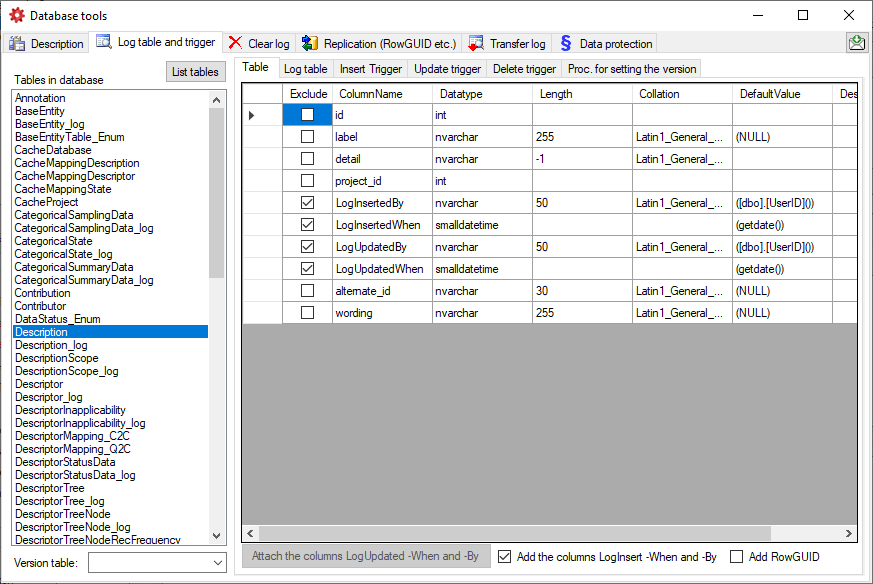
In the Log table section (see below) you can create a logging table for the selected table in a format as used within the Diversity Workbench. Click on the Show SQL ... button to show the SQL-statement that will create the logging table. If an old logging table should be kept, choose the Keep old log table option. If your table should support the version setting from a main table, choose the Add the column LogVersion option. To finally create the logging table click on the Create LogTable ... button.
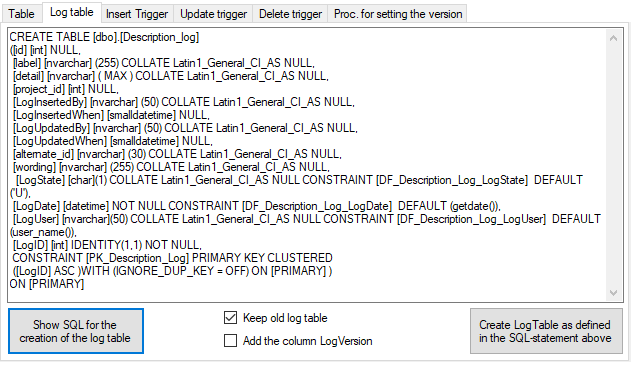
The triggers for insert, update and delete are created in the according sections (see below). If an old trigger exists, its definition will be shown in the upper part of the window. Click on the Show SQL button to see the definition of the trigger according to the current definition of the table in a format as used in the Diversity Workbench. If a trigger should set the version in a main table, which the current table is related to, choose the Add version setting to trigger option. To enable this option you must select the version table first. To finally create the trigger click on the Create trigger button. The update and delete triggers will transfer the original version of the data into the logging tables as defined above, where you can inspect the history of the data sets.
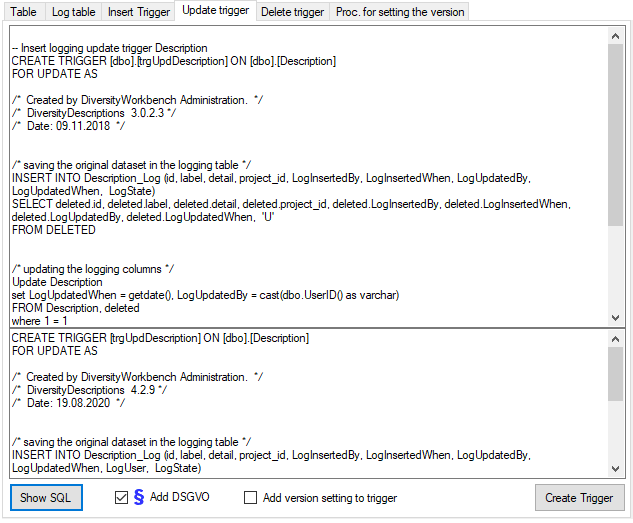
If you want to use replication within you module, the tables need certain columns and a log table. These preparations can be performed by a script, generated in the section Replication (see below). Select the tables you want to include in the process and create the script. This script can than be included in an update of the database. Please ensure that these changes are only be done by expert staff.
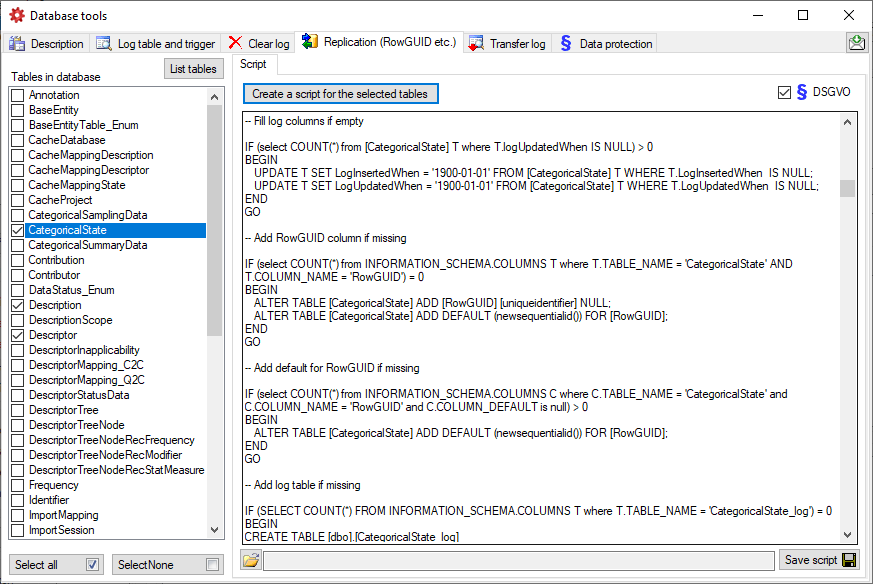
If for any reason you want to clear the log tables of
the database, this can be done in the Clear log tab as shown below. Click
on the List tables button to list the log tables. Then select those that
should be cleared and click on the Clear log of selected tables
 button (see below). Please keep in
mind that any restoration of data from the log is only possible as long as the data
can be retrieved from the log.
button (see below). Please keep in
mind that any restoration of data from the log is only possible as long as the data
can be retrieved from the log.
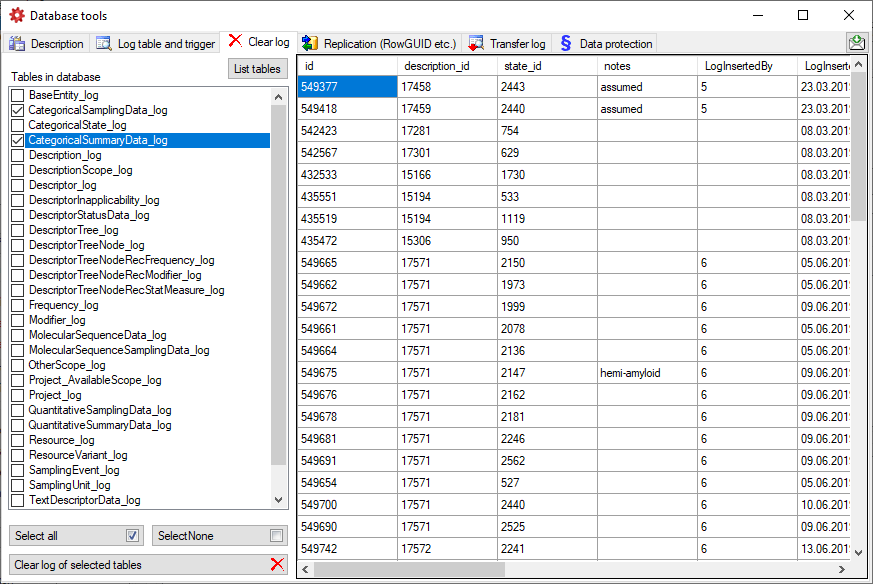

To implement the General Data Protection Regulation of the European Union several steps have to be performed in a database:
After these changes the only place where the name of a user is stored is the table UserProxy together with the ID. Removing the name (see below) will remove any information about the user leaving only a number linked to the information within depending data.
To generate a script for the objects and changes needed
to implement the
General Data Protection Regulation use the
 Data protection tab as shown below. The generated script will handle
the standard objects (logging columns) but not any additional circumstances within
the database. For these you need to inspect the database in detail and create a
script to handle them on your own.
Data protection tab as shown below. The generated script will handle
the standard objects (logging columns) but not any additional circumstances within
the database. For these you need to inspect the database in detail and create a
script to handle them on your own.
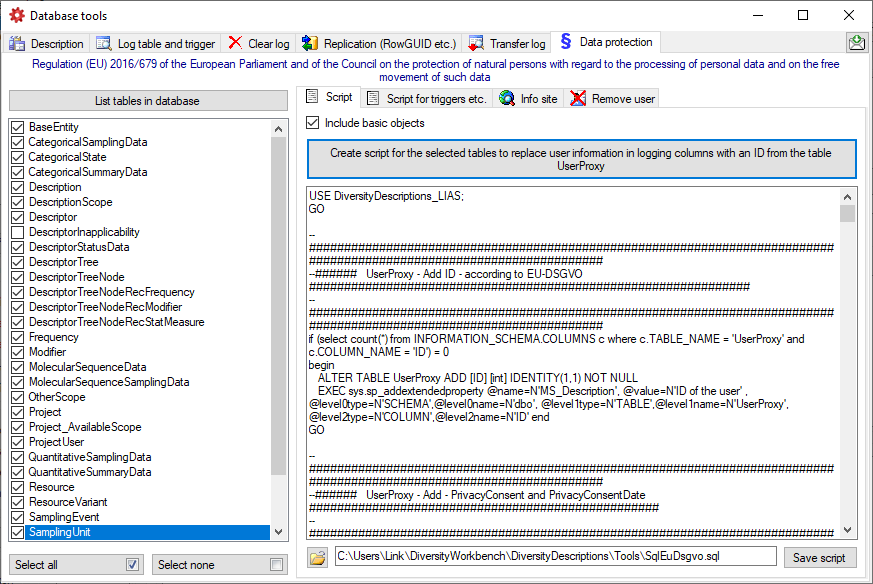
To set the website where detailed information about the
handling of the
General Data Protection Regulation within the DiversityWorkbench resp. the
current database is provided, click on the
 button on the
button on the
 Info site tab. If unchanged, the
default site for the DiversityWorkbench is set (see below).
Info site tab. If unchanged, the
default site for the DiversityWorkbench is set (see below).
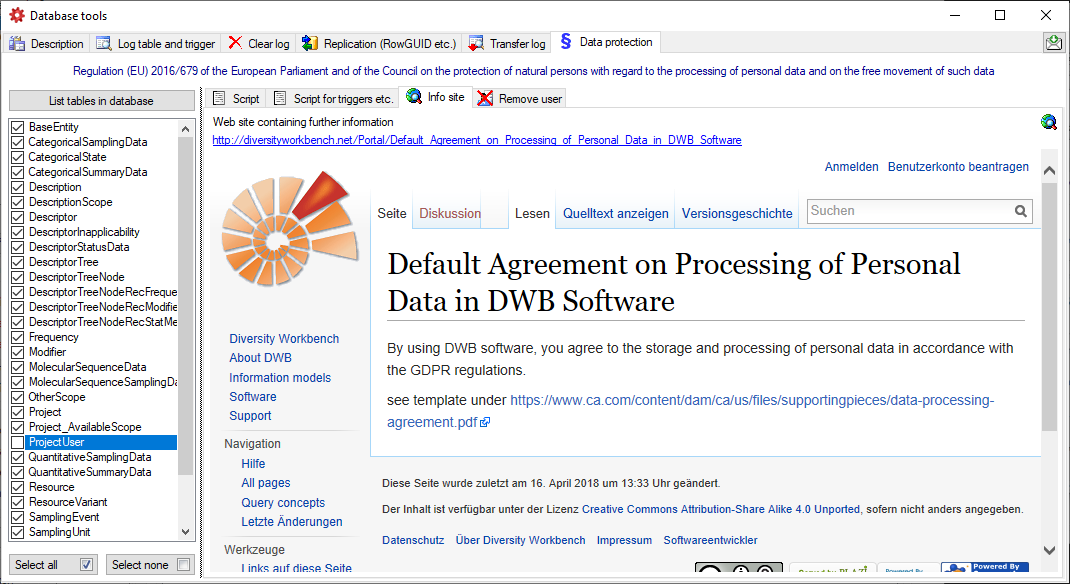
If for any reason a user wants his name to be removed
from the database, select the users name from the list as shown below and click
on the  button (see below).
button (see below).
